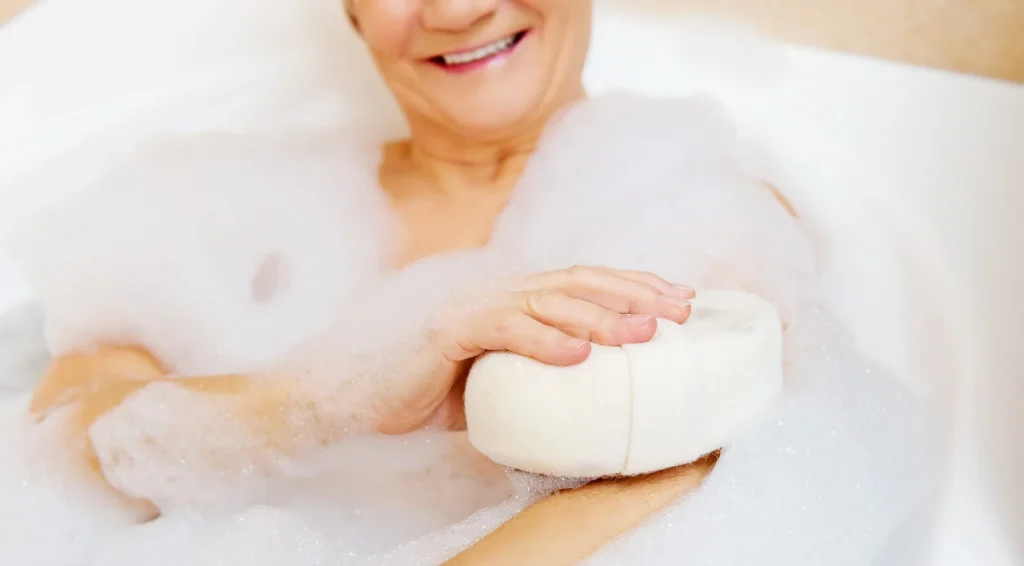
Elderly Bathing: How Properly Bathe Seniors at Home?
Showering and maintaining hygiene for the elderly are crucial aspects that everyone should pay attention to. Despite mobility issues or a reluctance to bathe, seniors should bathe at least twice a week. Elderly bathing at home usually requires observing certain principles and more safety precautions to prevent falls and help them maintain balance. On the other hand, it may be necessary for a caregiver or nurse to assist them in all or some stages.
It is possible that the elderly cannot perform daily tasks such as bathing independently and therefore need help from others. Slippery surfaces can cause fractures or bruises in older adults. Seniors who have cognitive impairment or difficulty moving need assistance when bathing. Muscle and joint pain, bone problems, or forgetfulness and cognitive issues may cause seniors to be unwilling to bathe. Sometimes, to bathe an elderly person, it is necessary to first create motivation and desire for this task in them.
In bathing tips for the elderly, we mentioned some tips and tricks on bathing and working with older adults. In continuation of the article from humanhealthmag, we intend to explain how to properly bathe an elderly person at home.
Bathe the Elderly
It’s best to adopt this principled and healthy bathing method to see for yourself how much of your skin problems, especially dryness and its consequences in old age, disappear.
Skin Dryness in Middle Age
Beauty and a senior?! You’ve likely heard your parents express surprise about changes of aging and their hands and faces becoming dry, mentioning that they never had to use moisturizer in their youth. Middle-aged and elderly men, in particular, who often dislike the feeling of applying creams to their hands, faces, or other parts of their skin, frequently suffer from dry and cracked hands or have scratches and wounds due to itching caused by dryness and frequent scratching. You might be surprised to learn that the root of many of these troubles lies in elderly bathing habits and neglecting certain principles before and after washing, and that you can easily get rid of them.
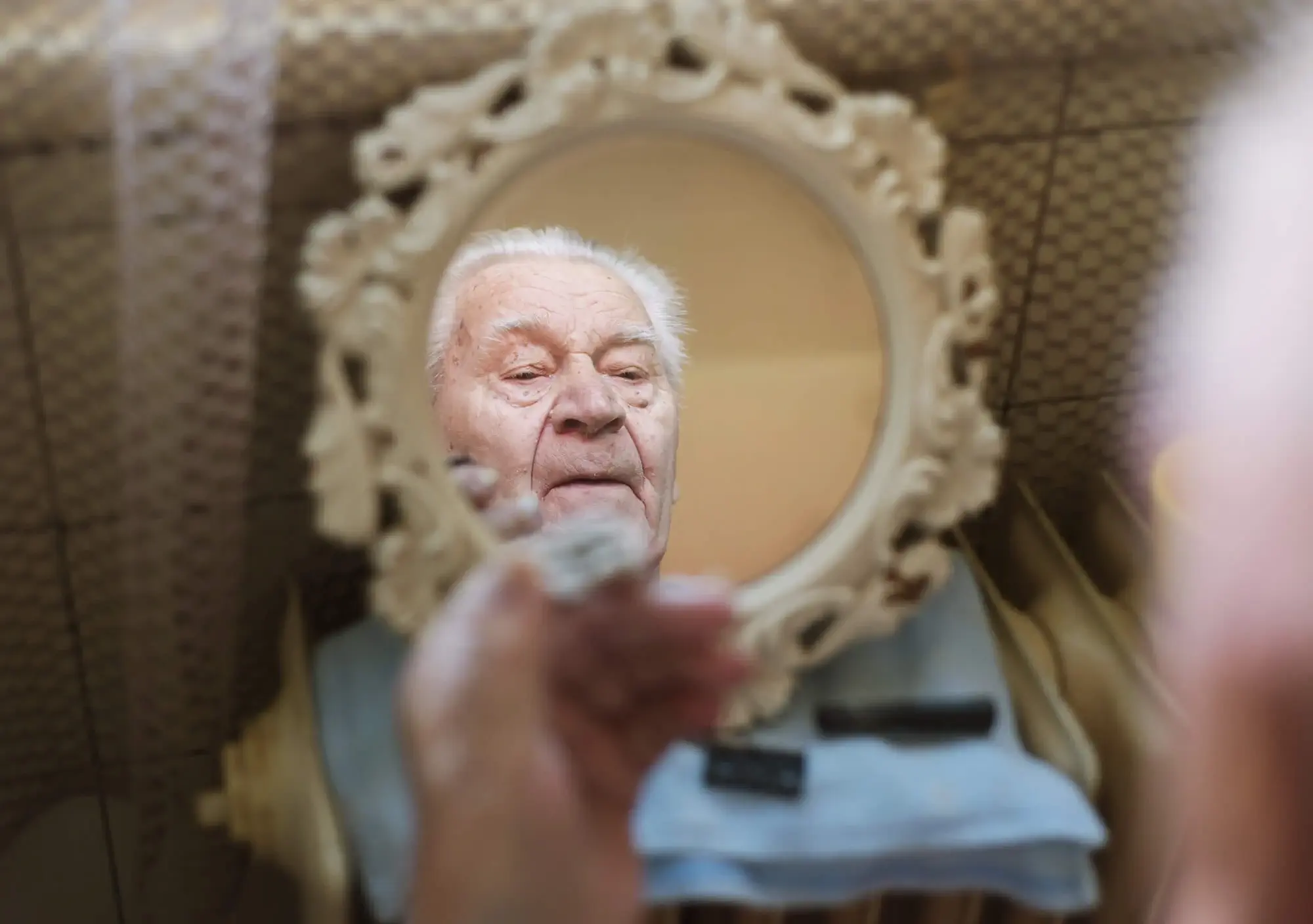
How Often Should the Elderly Bathe & Shower?
How many times a week should the elderly bathe? Please pay attention to the following recommendations:
- Our recommendation for elderly individuals and those with dry skin is to bathe once or twice a week.
- Bathing, especially when combined with washing the skin with cleansers, causes skin dryness.
- Even water alone can strip away the skin’s natural oils, which are on its surface and protect the water within the skin tissue cells.
- If you wash your hands daily, avoid using very hot water to minimize this problem.
What Is the Best Water Temperature for Bathing the Elderly?
Everyone, young and old, is advised never to shower with hot water, but this recommendation and emphasis are even more critical for the elderly. This is because, due to aging and specific hormonal changes in old age, the skin undergoes changes that make it unable to retain water as well as it did in previous years. If your skin frequently becomes dry, especially when exposed to wind or in contact with various detergents:
- Always shower with lukewarm water, and be sure to check the water temperature before showering to ensure it is not too hot.
- Before taking off your clothes, check the water temperature with your elbow.
Which Cleansers Are Recommended for Bathing the Elderly?
The elderly should use very mild body washes specifically designed for cleansing to avoid removing the natural oils present on the skin’s surface. Elderly individuals should not use rough loofahs or bath mitts and should not scrub their skin with them under the pretext of relieving itching.
- One of the significant causes of itching is excessive skin dryness.
- By trying to maintain skin moisture, you will soon be rid of this itching.
Should Towels and Clothes be Left in the Bathroom or Outside?
Try to put on your towel and clothes inside the bathroom. If you don’t have space to place the towel in the bathroom, you can put it in a basin or a special container and also place a moisturizing lotion containing Vaseline or Eucerin next to your towel. This is because, in the humid bathroom environment, you should gently place and remove your soft towel on your skin.
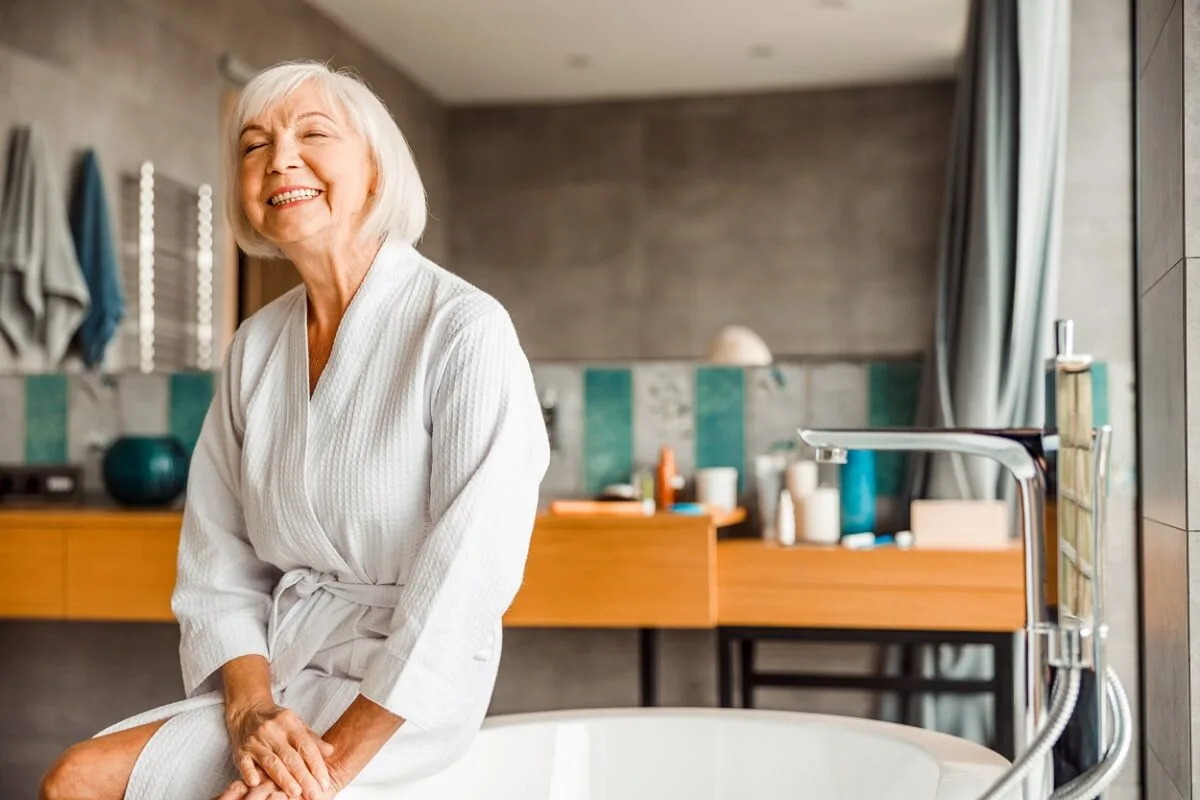
In the bathroom environment, the skin’s moisture has not yet evaporated, and the use of moisturizers has a greater effect on the skin. Also, know that you should never rub the towel vigorously on your skin. Apply body lotion all over your skin right there to prevent excessive evaporation of water from the body’s surface.
Note: Scented lotions are not suitable. It is better to use simple lotions.
What Is the Most Suitable Towel for Bathing Elderly?
The material of an elderly person’s towel should be soft and delicate so that the rough texture of the towel does not irritate the skin. Even this delicate towel should not be moved roughly over the skin. Because the skin tissue in the elderly may be damaged due to its deterioration, it is better to keep the towel in an environment outside the bathroom after showering and getting dressed for elderly skin care.
- Humidity is a favorable factor for the growth of microbes and fungi.
- Maintaining the towel and paying attention to its hygiene is necessary for maintaining your skin’s health.
- The rate of reproduction of these fungi and microbes increases in the dark and warm environment of the bathroom.
- The towel inside the bathroom should ideally be near a radiator and away from the toilet.
If you are accustomed to hanging a wet towel there after showering, it is better to know that the humid bathroom environment is not suitable at all, and the towel should be spread out in the open air to dry well. After drying, you can place it in a closet, drawer, or even a specific place you have in the bathroom. Ultimately, taking care of the skin and having healthy skin greatly helps the elderly person’s comfort.
How Often Should Bath Towels be Washed?
It is best to pay attention to this seemingly simple matter:
- Wash your towel at least once every two weeks.
- Most microbes die at temperatures close to 80 degrees Celsius.
- Be sure to wash towels at high temperatures and with boiling water.
- Use open air inside or outside the room and exposure to sunlight for drying.
- A towel washed at this temperature with any detergent will be free of any contamination.
If you have a specific skin problem or fungal disease, it is better to use disinfectants as well. Rinse it well after washing. If you have an automatic washing machine, it is also necessary to leave the towel in the open air or room to dry completely after machine drying.
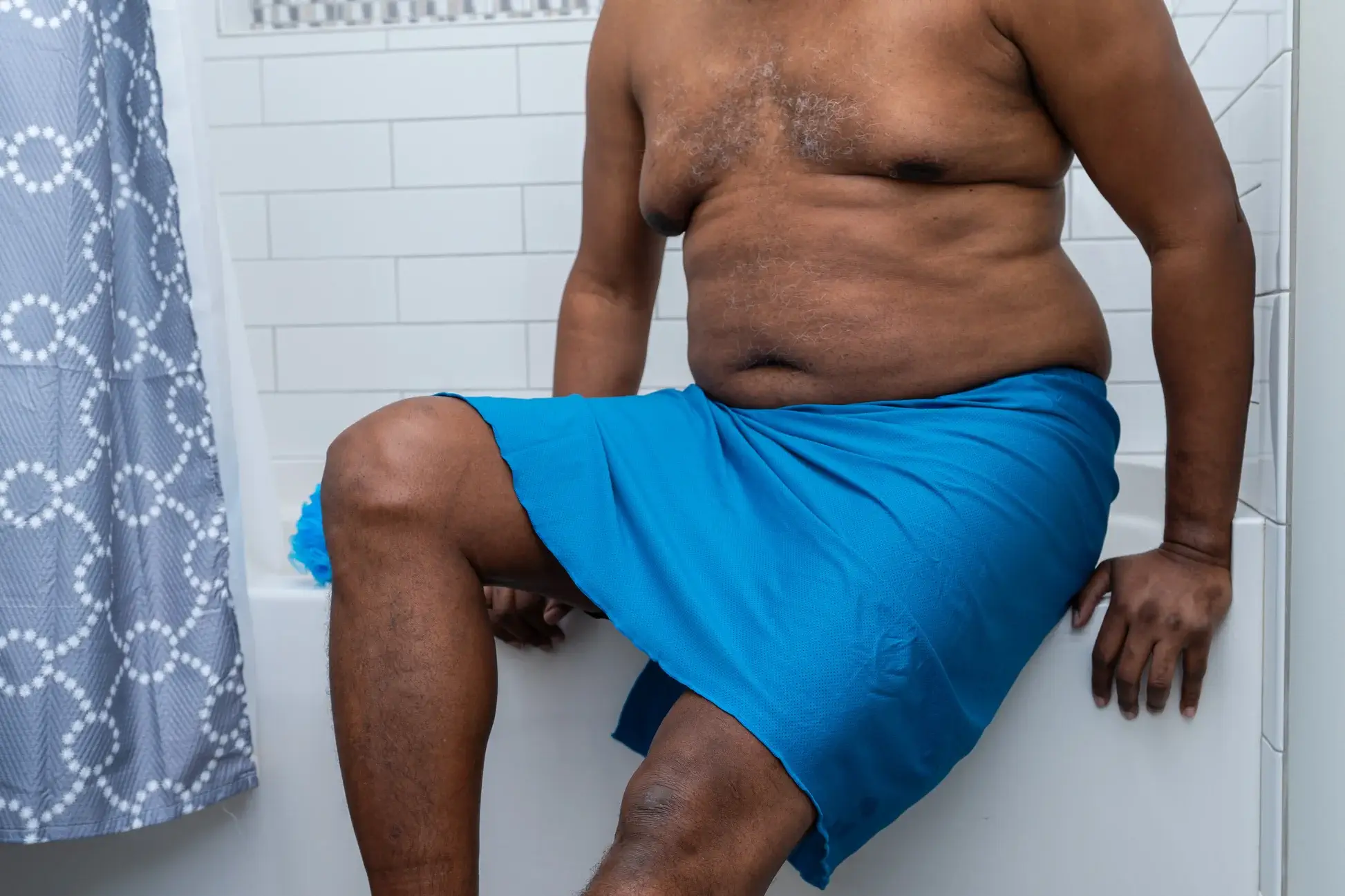
How to Properly Bathe an Elderly Person?
An elderly person’s need for assistance during bathing depends on their ability to move. An elderly person may temporarily have difficulty caring for themselves after an illness or surgery, or they may require long-term help due to memory problems or paralysis. These individuals need more assistance during bathing.
a) You Need to Give the Elderly Person Motivation to Get Clean
The elderly often lack the desire to bathe because they don’t socialize much. Of course, sometimes they also lack the desire to bathe due to old age and physical frailty. You can encourage seniors to bathe and provide them with motivation. You can mark days on their calendar for going to the cinema, park, visiting relatives, or going to their children’s homes, and encourage them to bathe before going.
b) Offer to Help Them Bathe
Sometimes, most seniors prefer to do their personal tasks independently, but you should also supervise their activities in the bathroom. Make sure the senior can manage their washing themselves and does not create any problems for themselves in the bathroom. The following supplies should be available to the elderly person during bathing:
- Removable showerhead
- Shampoo
- Liquid soap
- Safety grab bars
- Special bathing chair
- Bath loofah
- Body lotion
- Adhesive and non-slip mats
- Bath towel
c) Be Sure to Ask Senior About the Bathing Time
If your elderly person is not very willing to bathe, change the way you ask. For example, don’t ask the senior if they are going to bathe. Ask them what time they would like to bathe. Ask them if they want to bathe alone or if you should help them.
d) It is Better to Hire a Senior Caregiver
If the senior cannot bathe alone or is unwilling to bathe with family members, know that this is completely normal. It is better to hire an in-home elderly caregiver who can better assist them with this. Ask the home care service center to send a caregiver to your home twice a week at specific times. An important point in the principles of bathing the elderly is that the caregiver should guide the elderly person throughout the bathing process and respect their privacy so that the elderly person feels comfortable and at ease.
Note: Getting help from a stranger to wash the elderly is a bit concerning. So hire a professional.
e) Bathe the Elderly Regularly
Mark specific days for the senior’s bathing on the calendar so that it becomes a routine for them. Of course, this order and planning in tasks automatically creates order for the senior.
f) Preparing the Elderly for Bathing
Initially, the nurse or caregiver should sensitively and carefully help the elderly person undress safely and comfortably. If the elderly person is unable to do this alone, the nurse or family members should carry out this process in a coordinated and gentle manner with support and cooperation. At this stage, paying attention to maintaining privacy and creating a comfortable and pleasant environment for the elderly is very important so that they feel calm and secure and can confidently proceed with the bathing process.
G) Adjusting the Water Temperature
Adjusting the water temperature is a fundamental factor in creating a pleasant and safe experience for the elderly. These individuals are usually more sensitive to temperature changes, so the water temperature should be neither too hot nor too cold. Caring for elderly in cold weather and regularly checking the temperature before entering the bath and using a thermometer or your own hands can prevent problems such as burns or chills for the elderly and provide a suitable and safe environment for their bathing.
H) Preventing the Elderly from Slipping
During bathing, special attention should be paid to preventing the elderly from slipping and falling. Educating the elderly person on the proper use of safety grab bars and installing a special bath chair can make the situation more comfortable and safer. Also, choosing non-slip mats and being careful to prevent soap and shampoo from spilling on the bathroom surface are other important measures to reduce the likelihood of the elderly slipping while bathing.
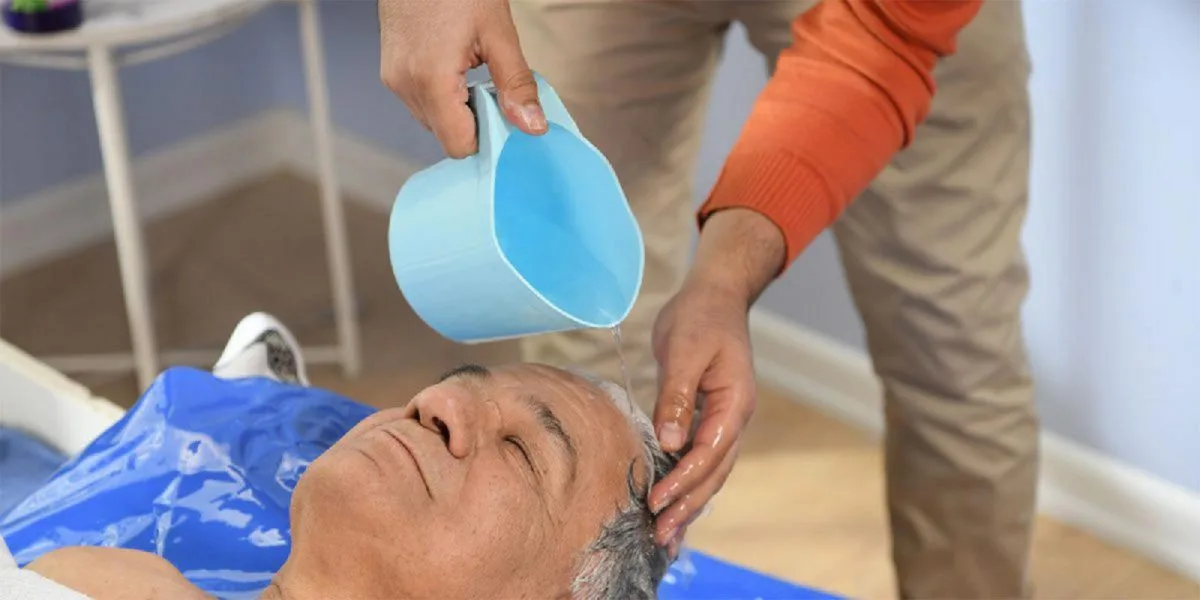
I) Beginning the Bathing Process for the Elderly
Continuing with bathing elderly at home, you will bring the elderly person into the bathroom. Individuals with cognitive impairment or dementia may not be able to bathe themselves. In this case, the caregiver must perform this task. The caregiver can assist the elderly person in some stages, such as washing their hair or body. In fact, depending on the needs and the extent of the elderly person’s motor and cognitive impairment, the caregiver may need to assist them in parts of or the entire bathing process.
While in the bathroom, you can also attend to the elderly person’s oral hygiene by using fluoride, a toothbrush, or other hygiene methods. Washing the head and hair is a challenging step in bathing for some elderly individuals. Some seniors may not be able to raise their arms and wash their hair and head. In this case, the caregiver should assist them.
J) Exiting the Bathroom
After the elderly person finishes bathing at home, hand them the towel and help them dry their body if needed. Drying the elderly person’s body with a towel should be done gently, as the skin of the elderly is sensitive and may be damaged. If the elderly person has skin problems or suffers from dry skin, a skin lotion should also be used at this stage.
Maintaining Safety in the Bathroom While Washing the Elderly
Considering the following three points about home safety for elderly, ensure safety in the bathroom for the seniors during bathing:
- Install a grab bar in the bathroom for the elderly.
Often, the elderly may get injured while bathing due to a lack of balance. However, you can help them have more control while standing by installing a grab bar in the bathroom. This idea can be very helpful for the senior to hold onto while standing and maintain their balance. This grab bar can help the senior avoid falling in the bathroom in emergency situations.
- Provide a special chair for the elderly.
Using a comfortable chair for the elderly that prevents slipping and fatigue in the bathroom can be beneficial. In your opinion, how to keep elderly from sliding out of chair?
- Install a handheld showerhead in the bathroom.
A handheld showerhead helps the elderly easily wash themselves while sitting on the chair. It is good to take these seemingly simple issues regarding the elderly seriously to avoid encountering serious problems.
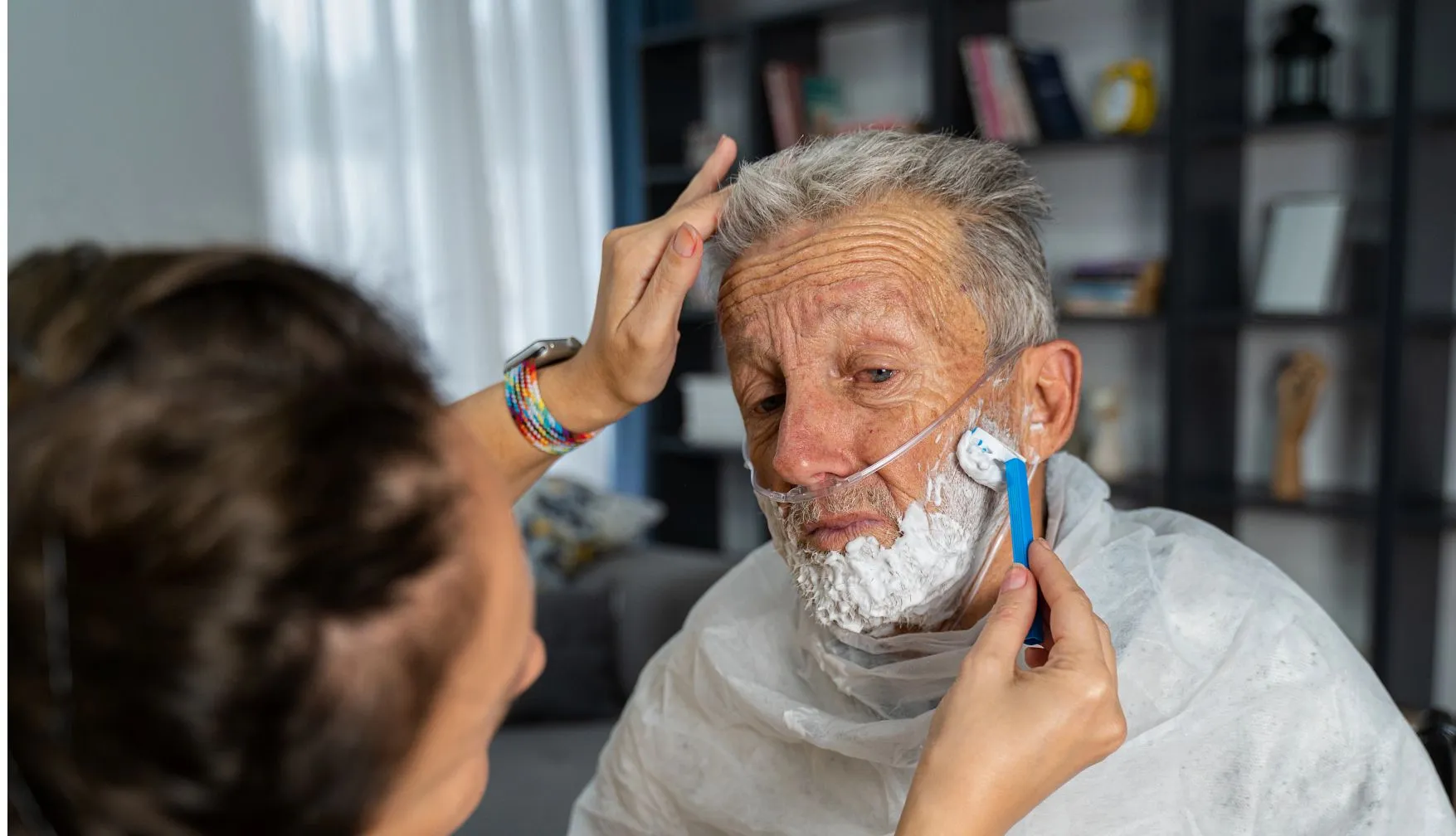
Actions Before, During, and After Bathing Elderly at Home
|
Actions Before Bathing the Elderly at Home
|
Necessary Actions During Bathing the Elderly | Actions After Bathing the Elderly at Home |
| Prepare the necessary equipment for bathing the elderly at home. | Prepare a warm room for undressing and dressing. This room should have a suitable temperature and privacy. | After bathing the elderly at home, use a soft towel to dry and keep the elderly person’s body warm. |
| Ensure the bathroom environment is safe. | Help the elderly person maintain balance. You can use a chair for this purpose. | First, wait a little for their body to dry slightly in the bathroom temperature and for the water to be absorbed, and then leave the bathroom. |
| The bathroom should have sufficient lighting and not be overly cluttered. | Start with a gentle shower. | Before dressing, use lotion for sensitive and vulnerable areas of the body. Help the elderly person with the dressing process. |
| Also, necessary safety equipment, including grab bars, should be installed in the bathroom. | Shampooing the hair should be done at the beginning. The next step is to wash the body with a loofah. Help the elderly person wash areas that are difficult to reach. | The bath towel should always remain hygienic and clean. Placing the towel in a damp and dark place provides a breeding ground for microbes and fungi. |
| Set the water temperature between 38 and 45 degrees Celsius. | Do not forget to help dry the body and use a towel. Helping with dressing is the final step in the correct way to bathe the elderly, which you should do. | After bathing, give the elderly person a drink to compensate for sweating and water loss during the bath. Measure the temperature of the room where the elderly person is resting and make sure the room is warm. |
Concluding Remarks
Aging makes some tasks difficult for the elderly, such as standing, bending, or sitting, and causes pain for these individuals. Also, elderly people with dementia or Alzheimer’s may be afraid of the sound of water. On the other hand, the fear of falling is also one of the reasons that may deter an elderly person from going to the bathroom.
The method of bathing elderly at home involves observing certain points. One of the most important things to pay attention to is ensuring the safety of the elderly. Make sure the bathroom floor is not slippery and not cluttered. Also, help maintain the safety of the elderly by using special equipment such as safety grab bars or chairs, etc. Depending on the elderly person’s needs, you may need to assist them in each stage of bathing at home.
Usually, washing hair or scrubbing some parts of the body is difficult for the elderly. Older adults with Alzheimer’s, dementia, or mobility problems also need help with all stages of bathing. Could you help us make this content even better? What do you love, and what can we improve? Share your thoughts below, feedback is the key to creating better content for YOU.

Frequently Asked Questions
Why Do the Elderly Avoid Bathing?
The elderly are often impatient and, at the same time, feel worried about the dangers and risks of bathing.
What Are the Conditions for Bathing an Elderly Patient at Home?
You must ensure that safety precautions are observed and the elderly person’s health is maintained, and take them to the bathroom in a way that they feel the least discomfort.
How Often Should the Elderly Bathe?
Depending on the physical condition, mobility of the elderly person, and their personal desire, the frequency of bathing is adjusted, and of course, it should not be delayed in terms of hygiene.
What Is the Method of Bathing Older People?
Making the bathroom environment safe, adjusting the water temperature according to the elderly person’s needs, using mild detergents and moisturizers shape the way the elderly are bathed.
What Are the Most Important Points to Consider When Bathing the Elderly at Home?
Maintaining the safety and personal privacy of the elderly are the most important points to consider while bathing the elderly at home.
What Are the Dangers of the Elderly Bathing Late?
Delaying bathing in the elderly can lead to skin infections, body odor, mobility problems, deterioration of mental health, increased risk of heart problems, reduced sleep quality, and the accumulation of bacteria. Maintaining personal hygiene and regular bathing helps their physical and mental health.
